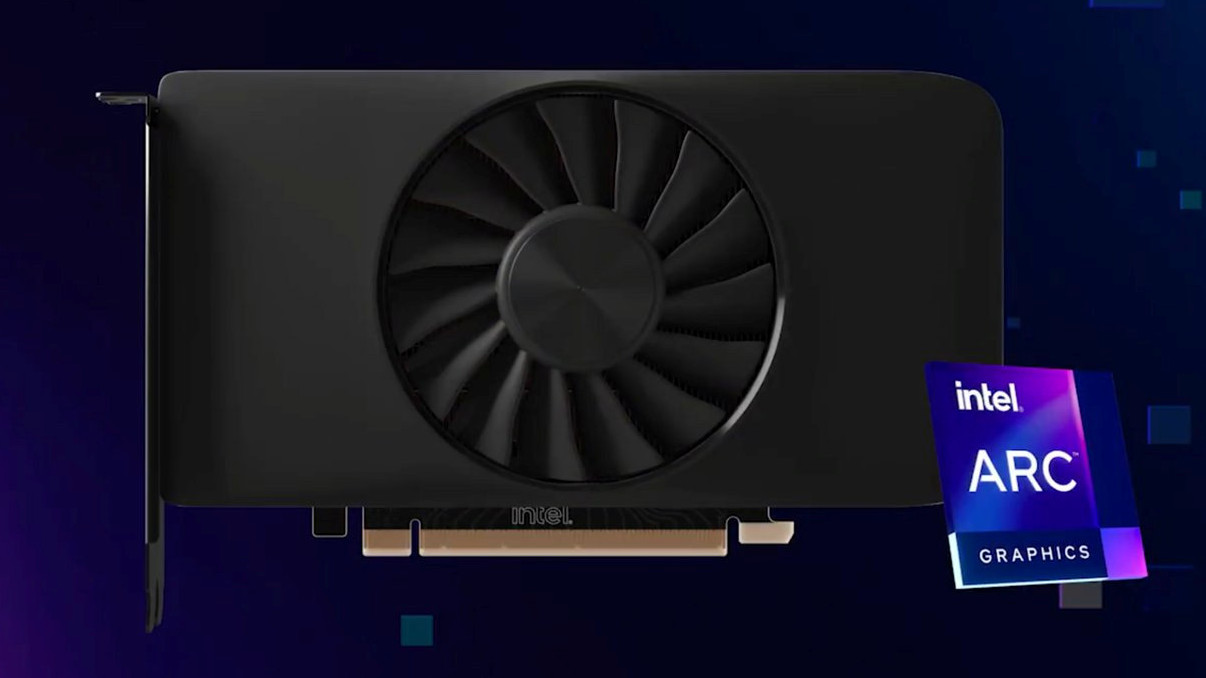Worries around Intel Arc desktop GPUs are growing
Arc graphics cards may not be as fast as we hoped, speculation suggests

Intel’s Arc Alchemist desktop GPUs are witnessing further doubt being cast on the performance levels they might achieve, although we should bear very firmly in mind that a new article outlining concerns is essentially educated guesswork – so grab a wheelbarrow for the salt here.
Still, 3D Center undeniably offers up some interesting talking points on what kind of frame rates we can expect from the initial Arc A380 discrete GPU, following Intel’s launch presentation for the lower-end graphics card where the firm announced its availability (though it’s only on sale in China to begin with, as you may recall).
The German tech site notes that the only promise Intel made in terms of comparative benchmarking was that the A380 was up to 25% better than AMD’s RX 6400 GPU for performance per yuan – gauged across a suite of less demanding games – but that some media outlets reported this as a pure performance comparison.
We didn’t, we might hasten to add – and further, we also noticed that some articles did fall into this trap – and of course, relative price/performance is quite different to relative raw performance as a comparative metric.
3D Center’s argument here is that the actual average for price/performance is 21% based on Intel’s figures, and then the site takes a bit of a leap in terms of making a theoretical conversion to its own 1080p ‘performance index’ to show that estimated raw performance gains might only be around 5% better than the RX 6400.
We must be skeptical around that, of course, and the follow-up conclusion that the tech site makes, re-evaluating expected performance for the entire Arc desktop GPU range based on the notched down expectations for the A380 here.
This is where 3D Center basically works off the assumption that the flagship Arc A780 will be roughly four times more powerful than the A380 (just based on the core counts), which when coupled with the lack of perfect scaling for Intel’s flagship, could mean that the A780 is not going to be squaring off against the RTX 3070 as previously predicted, but rather the RTX 3060 Ti (and maybe struggling there, for that matter).
Sign up for breaking news, reviews, opinion, top tech deals, and more.
Analysis: Intel seemingly just can’t catch a break right now
There are some huge caveats here, of course, especially around the rough guesswork and estimation the German tech site engages in – and the fact that 3D Center is only revising its own predictions, which ultimately could be somewhat off-base anyway.
At the same time, there are already genuine concerns around Intel’s Arc desktop GPUs, and particularly reports regarding the graphics driver, which seemingly can be wonky in some cases (with certain games suffering from serious woes or not even running at all). This is the main theory as to the reason for the delay of Arc desktop, and the way things have happened with a limited launch in China just to test the waters, with the software simply not being ready for a global rollout yet.
Obviously enough, when it comes to those Arc A380 benchmarks, we must also remember that Intel will have cherry-picked games to present the GPU in its best light. And we had concerns of our own that the graphics card is being compared to the RX 6400 in the first place – not a well-liked product, and a weak target to be taking pot-shots at in that respect.
While it does rather feel like everyone is piling on here, and Intel Arc desktop might be receiving an unfair early savaging, there is still hope in some respects. Pricing will still be key – and we’ll have to see what the price tag of the A380 is in markets like the US when it finally goes global – and those graphics drivers will get better over time.
But it sounds worryingly like there’s still a fair way to go with nailing the driver issues, and time isn’t a luxury Intel has when you consider that the next-gen GPUs from AMD and Nvidia are closing fast now, and maybe only a few months or so away. At which point Intel’s Arc flagship will be even further down the relative performance rankings when compared to RTX 4000 GPUs, rather than current-gen Nvidia RTX 3000 graphics cards, the same being true for AMD’s RDNA 3, of course.
Via VideoCardz
Darren is a freelancer writing news and features for TechRadar (and occasionally T3) across a broad range of computing topics including CPUs, GPUs, various other hardware, VPNs, antivirus and more. He has written about tech for the best part of three decades, and writes books in his spare time (his debut novel - 'I Know What You Did Last Supper' - was published by Hachette UK in 2013).